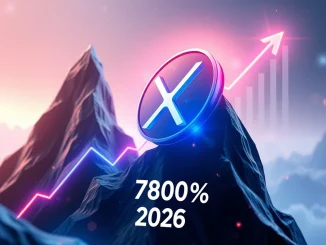
The cryptocurrency market is closely watching regulatory moves, and a recent development has captured attention: the SEC has delayed its decision regarding Grayscale‘s proposed spot Polkadot (DOT) ETF. This isn’t an outright rejection, but rather a procedural pause, a common step in the regulatory review process for such financial products.
What Does This SEC Delay Signify?
An SEC delay in an ETF application is standard practice. It means the commission requires more time to review the proposal thoroughly before making a final determination. For the Grayscale Polkadot ETF, this pushes back the deadline for a decision, keeping the market waiting.
Typically, the SEC follows a structured timeline for reviewing ETF applications, which includes:
- Initial review period.
- Potential for extensions (delays) if more time or information is needed.
- Public comment periods.
- Final approval or disapproval decision by a set deadline.
This particular delay for the Polkadot ETF application highlights the cautious approach the SEC takes, especially with products linked directly to cryptocurrencies beyond Bitcoin and Ethereum, which now have approved spot ETFs.
Why is a Grayscale Polkadot ETF Significant?
Grayscale has been a prominent player in the crypto investment space, known for its trusts that hold digital assets. Their successful conversion of the Grayscale Bitcoin Trust (GBTC) into a spot Bitcoin ETF set a precedent and demonstrated their capability in navigating the regulatory landscape.
A spot Polkadot ETF would offer investors direct exposure to DOT’s price movements without needing to buy and store the actual cryptocurrency. This can lower barriers to entry for traditional investors and potentially increase liquidity and mainstream adoption for Polkadot.
For Grayscale, expanding its ETF lineup beyond Bitcoin and Ethereum to include other major altcoins like Polkadot is a strategic move. It signals their belief in the long-term viability and investment appeal of these assets.
Understanding the Spot ETF Structure
Unlike futures ETFs, which track the price of futures contracts tied to an asset, a spot ETF directly holds the underlying asset. In the case of the proposed Grayscale Polkadot ETF, this would mean the fund would hold actual DOT tokens.
This structure is often preferred by investors because it aims to track the spot market price more closely, reducing potential tracking errors that can occur with futures-based products.
What’s Next for the Polkadot ETF Application?
Following the SEC delay, the application enters a new waiting period until the next deadline. The market will be watching for further updates from the SEC or Grayscale.
The outcome of this application could have broader implications for other altcoin ETF proposals. An approval could pave the way for ETFs tracking other large-cap cryptocurrencies, while a disapproval or continued delay could signal ongoing regulatory hurdles for the wider altcoin market.
Investors interested in Polkadot or the potential for diversified crypto investment products should stay informed about the SEC‘s future decisions regarding this and other similar applications.
Summary
The SEC’s delay on Grayscale‘s spot Polkadot ETF application is a standard procedural step, not a final judgment. It signifies that the regulator needs more time to review the proposal. While this extends the waiting period for potential mainstream access to DOT via an ETF, it keeps the possibility alive. The outcome remains uncertain, but it’s a key development for both Polkadot enthusiasts and those watching the evolution of cryptocurrency investment products in the regulated financial landscape.



